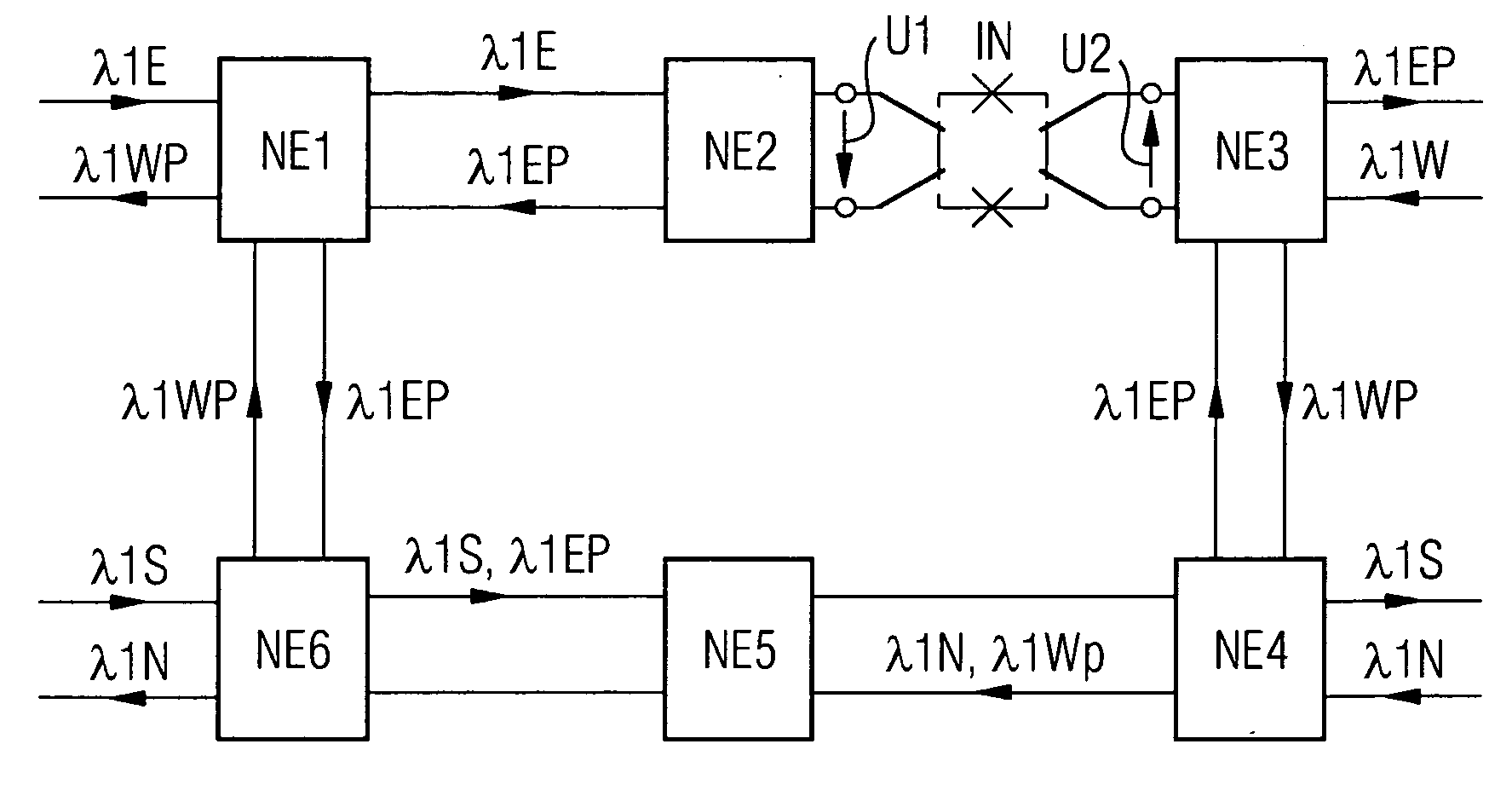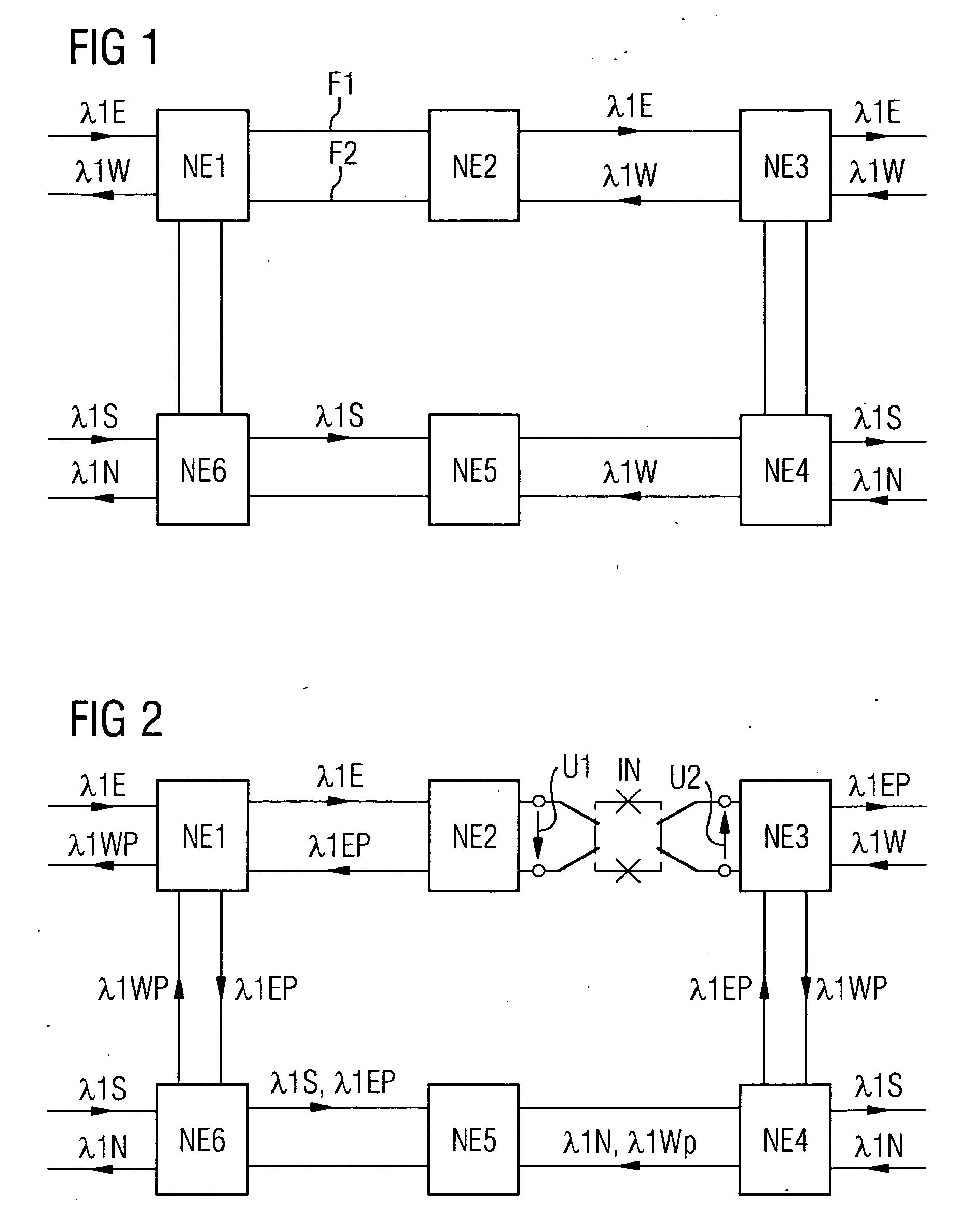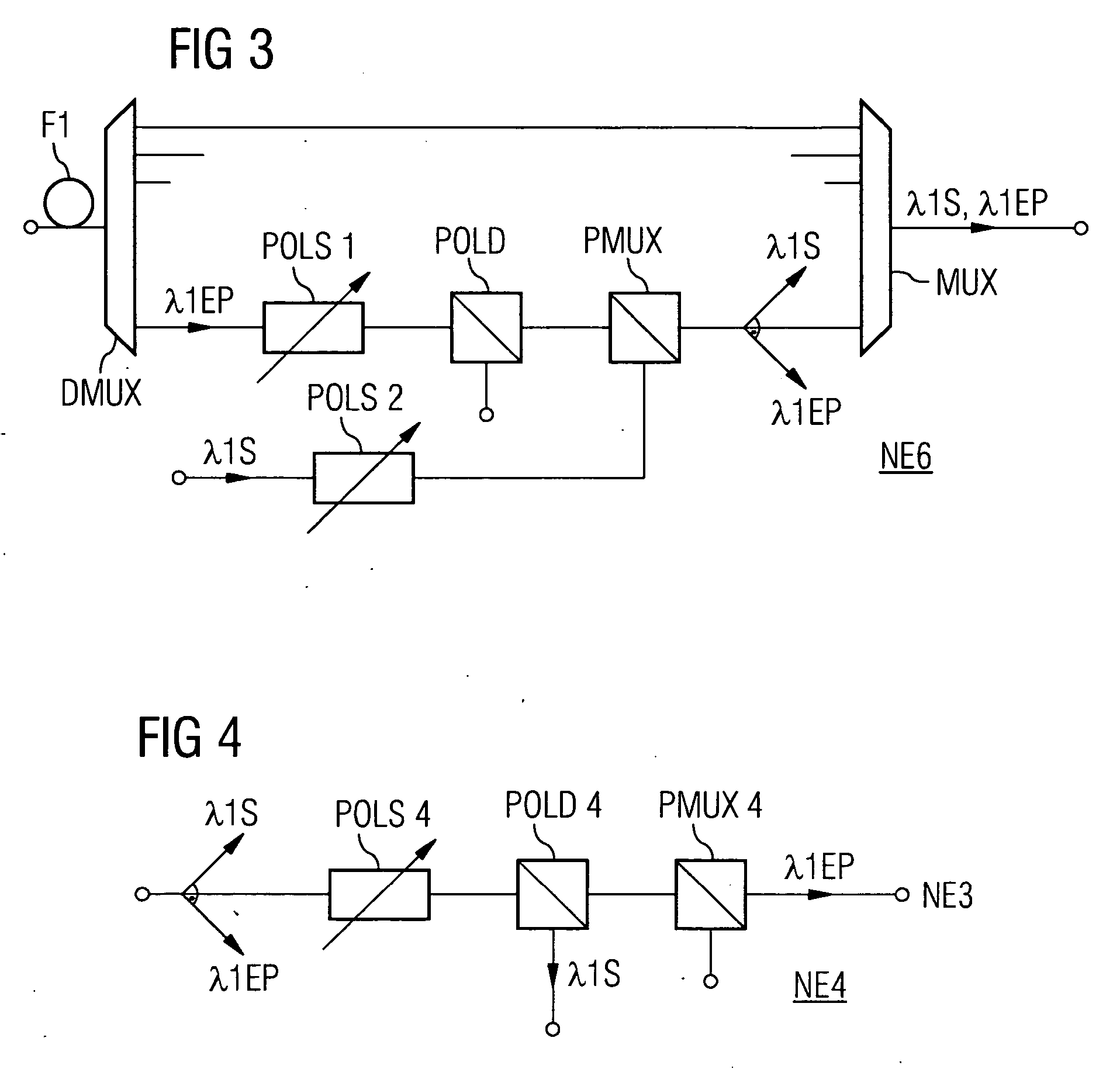Method and arrangement for the transmission of working signals and protection signals via optical data networks
a technology of optical data network and working signal, applied in multiplex communication, polarisation multiplex system, instruments, etc., can solve the problem of sharp reduction of transmission capacity, and achieve the effect of wide transmission bandwidth, high data rate, and low attenuation
- Summary
- Abstract
- Description
- Claims
- Application Information
AI Technical Summary
Benefits of technology
Problems solved by technology
Method used
Image
Examples
Embodiment Construction
[0017]FIG. 1 shows an extended 2-fiber ring network structure. A ring network formed with two fibers F1 and F2 features the network elements NE1 to NE6. For a connection (channel) between the network element NE1 and the network element NE3 a wavelength λ1 is used, with a working signal λ1E being transmitted in an easterly direction over the first fiber F1 and a working signal λ1W with the same wavelength being transmitted in the opposite direction. The same wavelength can also be used for transmission for example between the network elements in NE4 and NE6. The corresponding signals are labeled λ1S and λ1N. Naturally there will generally be more channels with other wavelengths present for connecting the other network elements, but these can be left out of our considerations for the purposes of explaining the invention.
[0018]FIG. 2 shows a fiber break at an interruption point between the network elements. The connection path NE1-NE2-NE3 is interrupted. In the known way the send sign...
PUM
 Login to View More
Login to View More Abstract
Description
Claims
Application Information
 Login to View More
Login to View More - R&D
- Intellectual Property
- Life Sciences
- Materials
- Tech Scout
- Unparalleled Data Quality
- Higher Quality Content
- 60% Fewer Hallucinations
Browse by: Latest US Patents, China's latest patents, Technical Efficacy Thesaurus, Application Domain, Technology Topic, Popular Technical Reports.
© 2025 PatSnap. All rights reserved.Legal|Privacy policy|Modern Slavery Act Transparency Statement|Sitemap|About US| Contact US: help@patsnap.com



